On April 6-7, we headed out on our first Rainforest Rendezvous tour of Agumbe this year (and our first ever in summer).
The campsite of Kalinga Centre for Rainforest Ecology (run by Gowri Shankar) is set within an areca nut plantation, with rainforest surrounding it on all sides. As we were settling down for breakfast in the dining area (open on all four sides), we noticed something flying down to one of the areca nut trees. And then, another… Southern Flying Lizards (Draco dussimieri) were gliding in from the rainforest to bask in the sun in the relatively open plantation.
The Southern Flying Lizards are agamids with a special adaptation. They have a membrane on either side of their body that helps them glide from tree to tree. Since they are not true “fliers”, they need to climb up to a certain elevation before gliding down to another tree. They also have a yellow appendage near their throat that is used for courtship and territorial displays.
After an orientation session, we headed out into the rainforest near the camp. Every step in the rainforest revealed many interesting things, from an inflorescence growing on the stem of a plant (could be an epiphyte) to interesting insects.
Even spiders on people’s caps 🙂
As we were busy photographing so many interesting things, we heard one of the participants call out “SNAKE”. Half-expecting to see a Rat Snake or a Pit Viper, I turned around. And I think I can never forget that moment. A few feet from the participant was a huge King Cobra! The snake was trying to cross the road very close to where the participant was sitting. I asked the participant to slowly get up and walk away calmly from the snake. By then, the rest of the group had gathered. Seeing us, the snake decided to retreat and went back to the other side of the road. He got off the road and waited for a few minutes watching us. We anticipated that the snake might try to cross again and stepped back a bit. However, he slowly made his way back into the forest.
King Cobras are known to avoid humans as much as possible. People around Agumbe are normally not too perturbed by the presence of the snake, unless it enters their living quarters or work places. In all likelihood, the snake had seen the person and had decided to carry on on its way calmly, before he saw the rest of us and retreated.
Snakes and Road Kills: An interesting thing that Gowri Shankar shared with us was that snakes often retreat when faced with danger. Many a time, they would cross a road almost fully and would start retreating when they feel a vehicle coming towards them. Thiscould be a common reason for road kills. So the next time you see a snake crossing a road, stop your vehicle till it crosses completely. Don’t try to drive from behind the snake as there is a big chance of it turning back and coming under your wheel.
After the breathtaking encounter, we headed back to the campsite for a classroom session on rainforests and lunch. Walking around the camp after lunch, we came across many interesting subjects in the macro world.
Birds were very active as we got good views of a Malabar Trogon, Yellow-browed Bulbuls, White-cheeked Barbets and Racket-tailed Drongos. In the late afternoon, we headed to Kundadri Peak to view the beautiful sunset there. Unfortunately, it was a foggy evening with clouds in the horizon. But the views from there and the amazing weather made the climb worthy.
The night walk around the campus started off with a Cat Snake (Boiga sp.). The snake seemed to be actively looking for a meal; so we quickly took a few photographs and went on our way.
Many frogs, including Yellow Bush Frog (Raorchestes luteolus, earlier known as Blue-eyed Bush Frog Philautus neelanethrus), Amboli Bush Frog (Pseudophialutus amboli) and a Fejervarya, were also seen on the night walk.
Next morning, we woke up to the beautiful song of the Malabar Whistling Thrush, a bird that’s aptly called Whistling Schoolboy. The morning session saw more Flying Lizards around the camp. Many birds, including Crimson-backed Sunbirds, Bronzed Drongos and Dark-fronted Babblers, made their presence felt through frenetic activity. We walked along a small stream through the rainforest where Forest Glory damselflies (Vestalis sp.) gave us an audience.
Around the water, there were many Skittering Frogs (Euphlyctis cyanophlyctis). They would disappear into the water the moment one gets close to the periphery. Read Vineet’s account of a Skittering Frog hunting.
After lunch and a session on rainforest photography, we headed out for one last walk into the rainforests. A Rat Snake made its appearance, in addition to a Scorpion. And this diurnal Gecko (note its round pupil, instead of the vertical pupil in most geckos that are nocturnal).
And, there was this very colourful Katydid to draw curtains on the tour!
All in all, a very eventful tour, with many many interesting stories! Here’s a photograph of the enthusiastic group.
Of course, there are more stories to be shared – both by us as well as our participants. Keep watching this space…
Our Rainforest Rendezvous tours for the monsoons start from mid-June. Stay tuned to updates on our Rainforest Rendezvous with Darter Photography Facebook page.





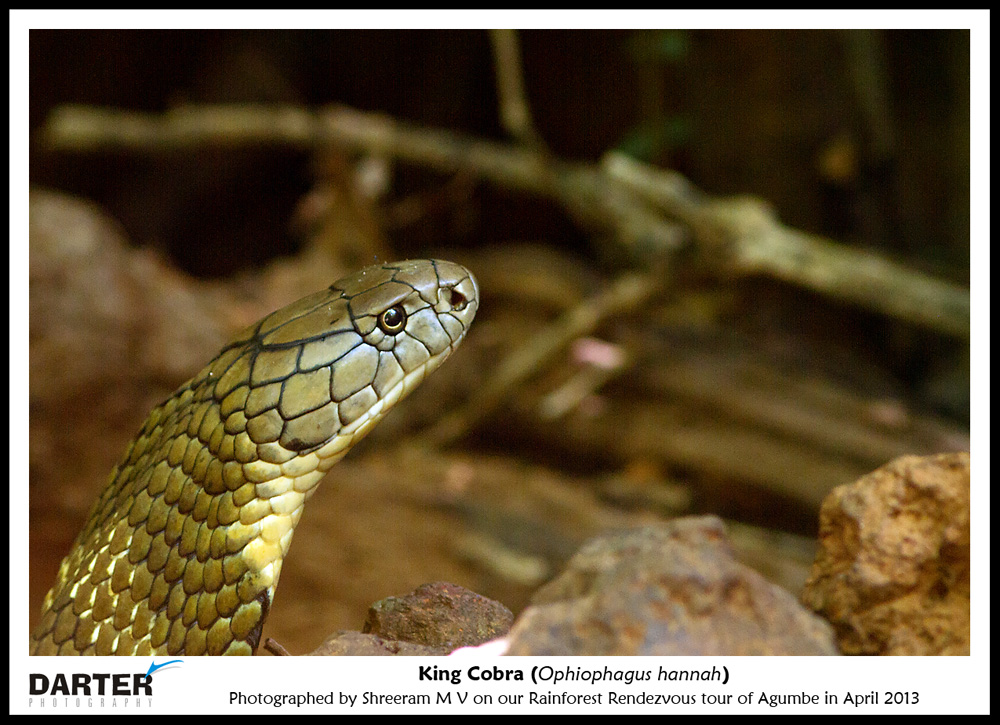



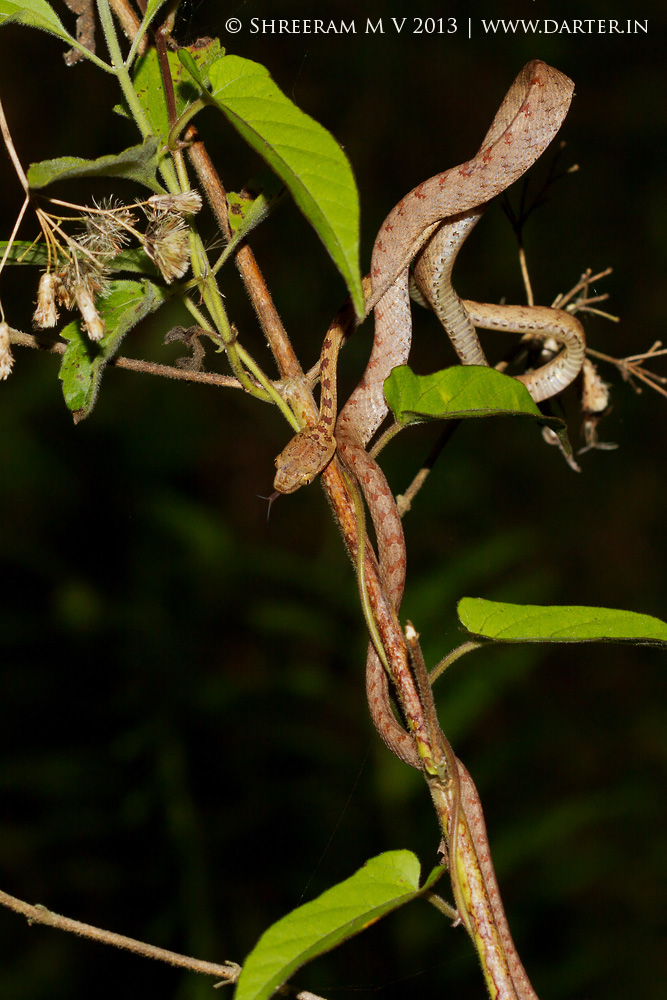
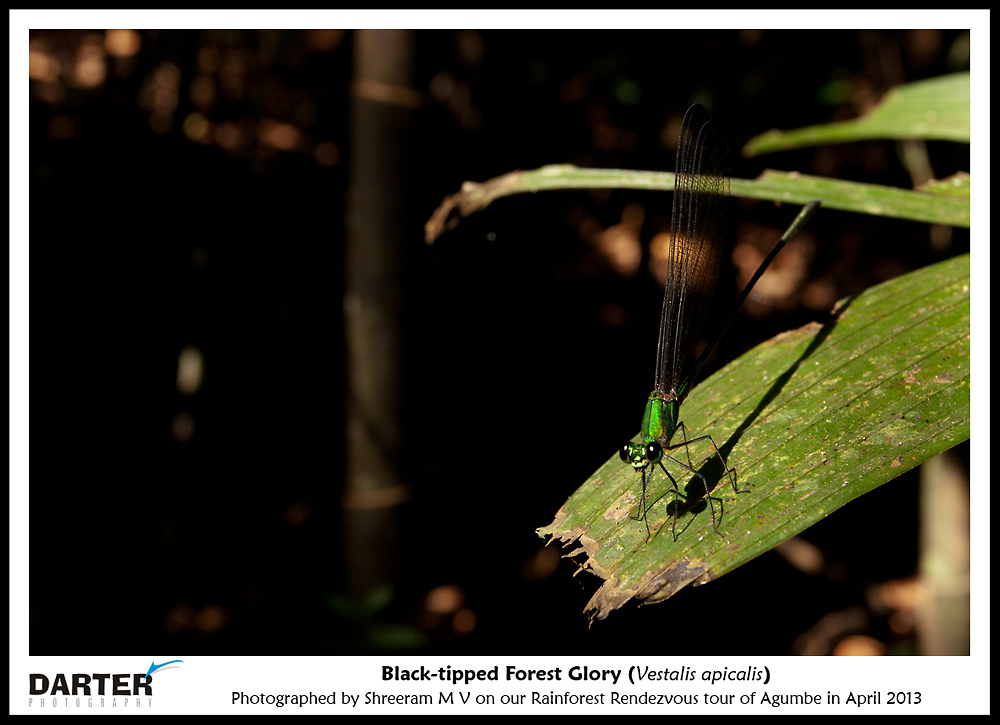
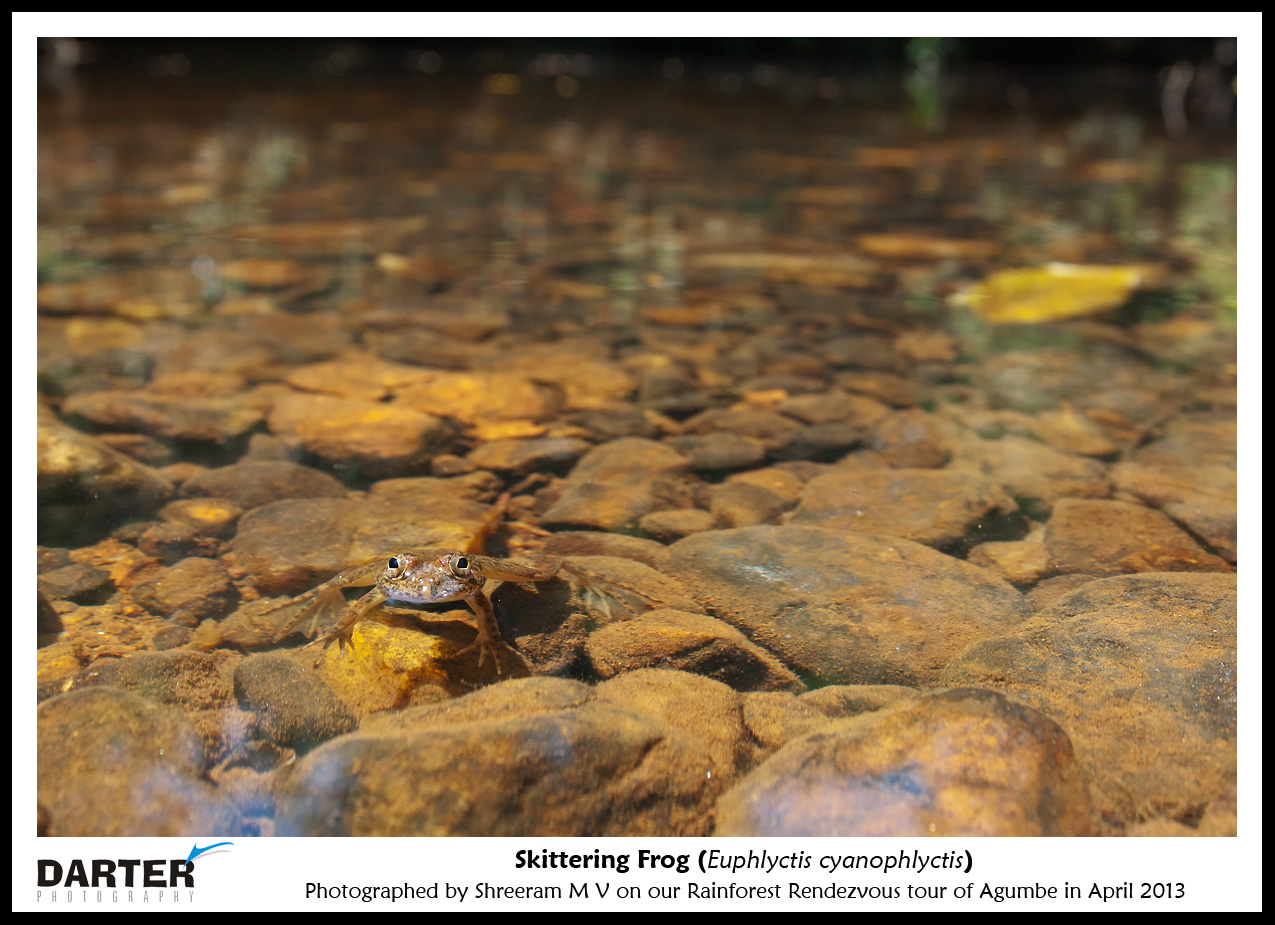
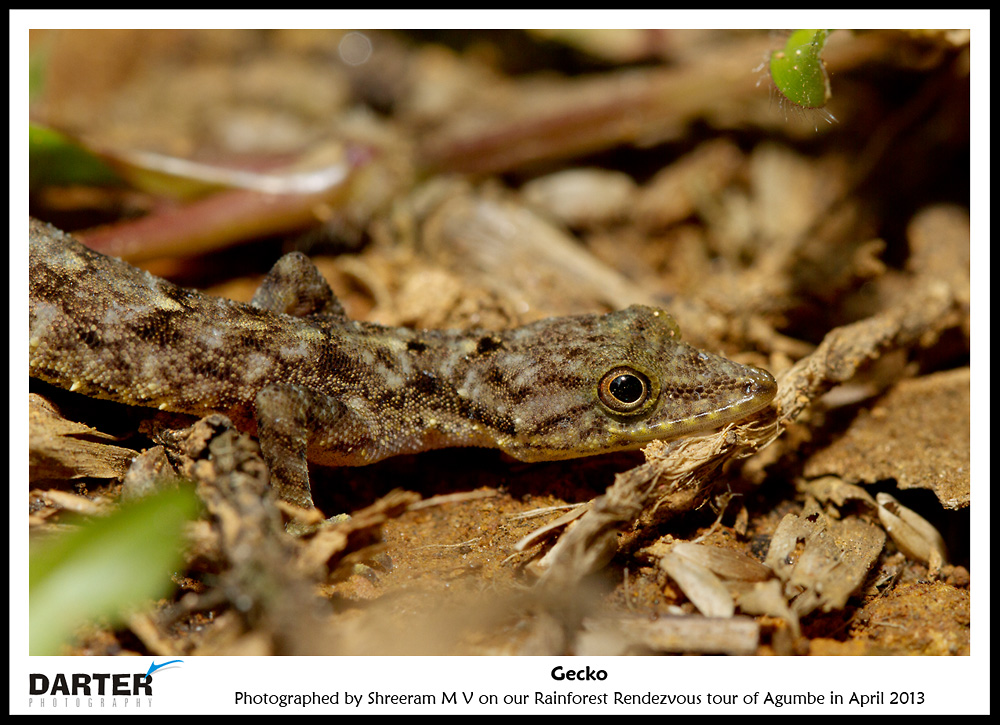
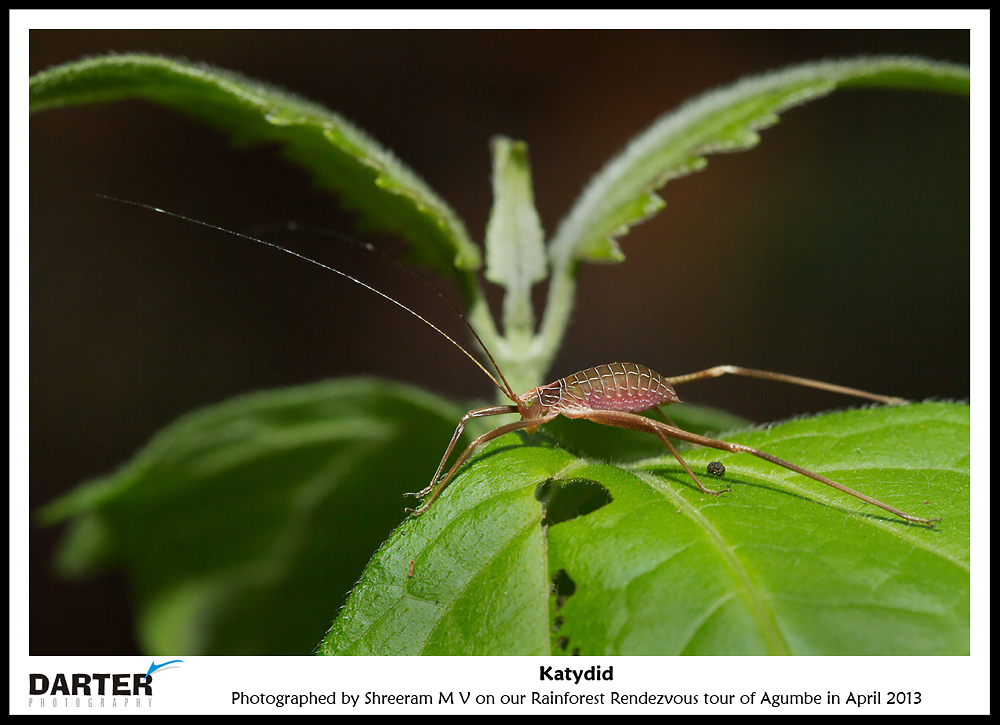
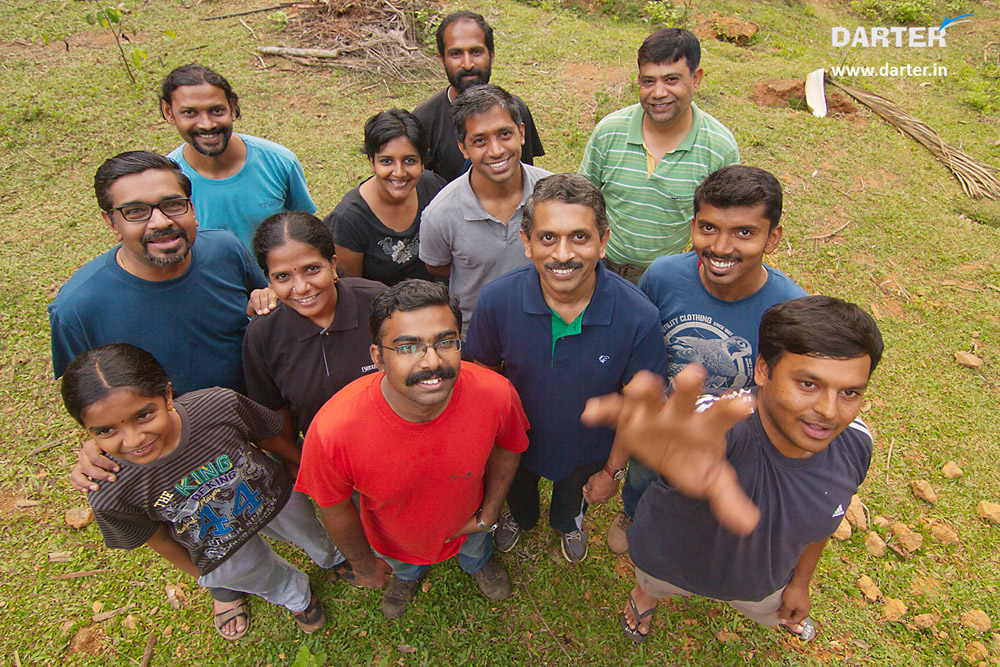
8 Comments